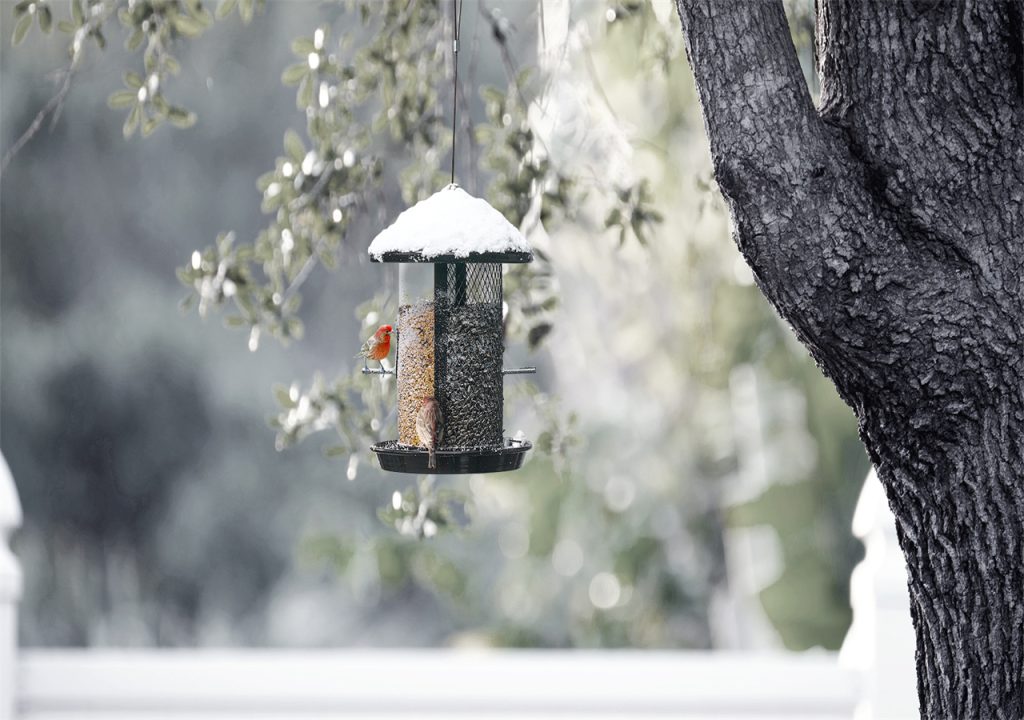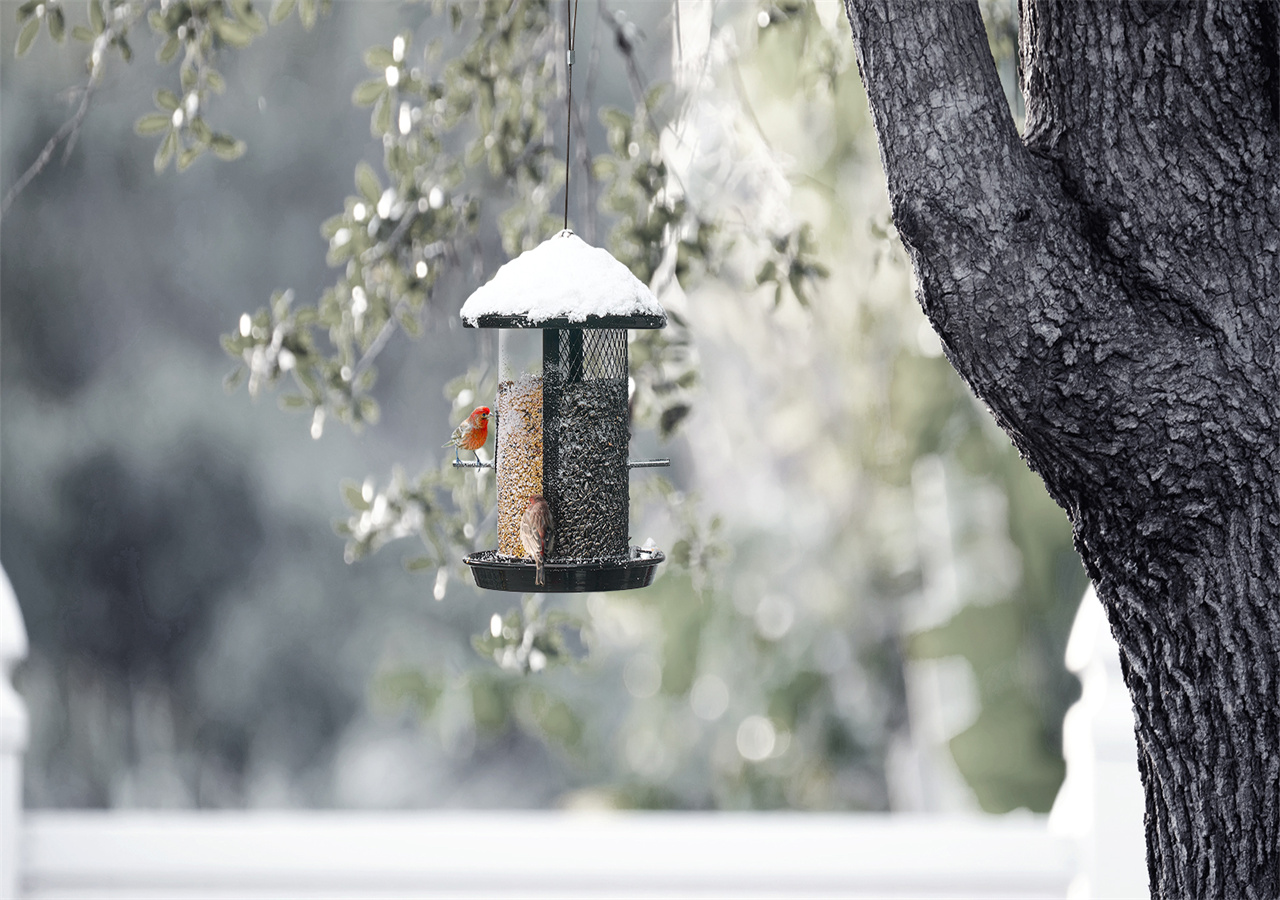When autumn arrives, you might wonder if it’s time to stop feeding the birds, so they can start their long journey south. Some people think that if we continue feeding birds in the fall, it might keep them from migrating. But there’s more to this story.
The truth is birds visit our feeders, especially hummingbird feeders, more in the fall, not to avoid migration but because they’re getting ready for it. They eat extra to build up energy for their big trips. Think of it like fueling up before a long road trip.
This article will explore whether you should stop feeding birds in the fall. You’ll also discover how to support our feathered friends on their incredible journeys.

Myths about Bird Feeding in Fall
One of the most popular perceptions is that if birds have a steady food source in the fall, they’ll choose not to migrate. The reality is quite different. Factors like day length, climate, instinct, and biological calendars primarily trigger migration. When birds embark on their southern journeys, they’ll still use available feeders to top up their energy reserves.
Another widespread belief is that once the birds start feeding from the bird feeders, it will make them lazy or overly dependent on feeders. And it will cause problems in migration. In reality, feeding backyard birds doesn’t discourage their natural migration process. Birds like the extra food, but they usually don’t depend on it completely. They appreciate supplemental food in unusual situations like severe weather or disasters.
Why do Birds Migrate?
Migration in the fall is a crucial part of a bird’s life. It involves the incredible long-distance trips that birds take. Many bird lovers use squirrel-proof feeders with special energy-rich foods to make this journey easier. Birds migrate for various reasons. The main reason is changes in the length of daylight.
Moreover, shifts in climate, inner instincts, and calendars also contribute toward migration. The decision to migrate isn’t influenced by whether there are feeders around. As birds begin their southern migration, they continue to utilize feeders, especially squirrel-proof bird feeders, to refill their energy for the remarkable journey ahead.
The Science of Fall Bird Feeding
In the fall, you observed that birds instinctively overeat at your feeders, particularly hummingbird feeders and oriole feeders. This does not mean the birds are very hungry. Instead, they’re following their biological clock.
This behavior is called “hyperphagia,” where they have an instinctive urge to eat more food in preparation for their migration. They need this extra energy stored as fat to fuel their long journeys. It ensures they have the strength to fly thousands of miles to their winter homes.
Why You Should Not Stop Bird Feeding in the Autumn?
It provides essential support for their long journeys. As they get ready to migrate, the extra food we offer helps them build up energy in the form of fat, which is like their travel fuel. It makes their trip safer and more likely to succeed.
Feeding birds keeps them healthy during migration. When natural food becomes scarce, our feeders give them a reliable food source during their hectic journey.
It’s a fantastic way to enjoy nature. Getting a close-up look at birds is not only fun but also a fantastic way to discover various bird species.
Birds have good memories, and if they find a reliable food source, they’ll come back in the spring to grace your backyard again.

Best Food for Feeding Birds in Fall
Choosing the right food for your fall feeders is essential to support birds during this crucial period. Birds require energy-rich, high-quality food to prepare for migration and sustain themselves during the hard journey. Here are some suitable food options for your fall feeders, including hummingbird feeders:
Black Oil Sunflower Seeds
These seeds are a favorite among many bird species, including finches, sparrows, and chickadees. They are high in energy and provide essential fats.
Nyjer (Thistle) Seeds
Especially attractive to finches, nyjer seeds are rich in oils and protein, making them an excellent choice for fall feeding.
Safflower Seeds
Cardinals and mourning doves are known to enjoy safflower seeds. They are a good source of nutrition and are less attractive to squirrels.
Peanuts
Offering shelled or unsalted peanuts is a great way to attract woodpeckers, bluejays, and nuthatches. These nuts are high in protein and fat.
Suet
Suet cakes are a superb energy source, consisting of animal fat and various additives like seeds and insects. They’re especially appealing to woodpeckers, nuthatches, and chickadees.
Mealworms
Bluebirds, robins, and warblers are among the birds that relish mealworms. These protein-rich morsels are perfect for supporting birds during fall.
Mixed Seed Blends
High-quality bird seed blends, including a combination of seeds and nuts, can attract a diverse range of bird species, providing them with the energy they need.
Fruit
Offering fresh fruit like apple slices can be a delightful treat for orioles, thrushes, and waxwings. Oriole feeders are best for offering fruit slices to migrating birds.
Insects
Insect-eating birds like warblers will appreciate live or dried insects as a protein-rich food source.

Essential Tips to Support Migration in Fall
- Provide foods rich in fats and proteins to help migrating birds build essential fat reserves.
2. Maintain clean and hygienic feeders, especially hummingbird feeders, to prevent the spread of diseases among congregating birds.
3. Ensure clean and fresh water sources, which is essential for migrating birds.
4. Plant native trees and shrubs that provide natural food sources and shelter for birds during their stopovers.
Conclusion
Feeding migrating birds in the fall is a wonderful way to support these incredible travelers on their long journeys. Having feeders out during the fall doesn’t affect a bird’s choice to start its journey. Many factors trigger the urge for birds to migrate, whether they’re hummingbirds, orioles, or other species.
By offering the right foods through clean and squirrel-proof bird feeders, you play a crucial role in helping them succeed in their journey. Your efforts will ensure a safe and nourishing stopover for these feathered friends. Keep up the good work, and enjoy the beauty of bird feeding in your backyard!



